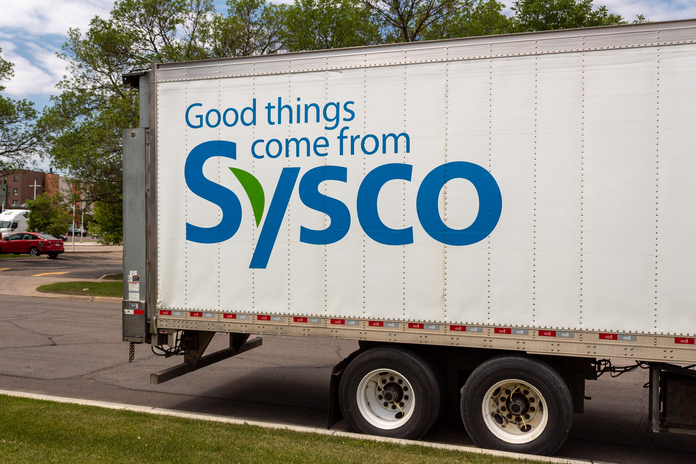One of the few equities that have increased significantly over the past year is US food service provider Sysco (NYSE:SYY). Restaurants and other “food away from home” enterprises are looking for efficiency to offset price increases as much as possible in the current inflationary environment, which is one of the causes. This is where Sysco’s cost advantages come into play.
Due to its scale, it can provide more affordable prices than rivals. Sysco is using these advantages in cost and efficiency to expand its market share. So far, it has been successful. In the $300B food distribution industry in the US, for instance, Sysco has a 17% market share, up a full point year over year to represent the significant market share increases.
Sysco’s cost advantages provide it with a competitive edge. Given its increased proximity to clients, the company enjoys lower distribution costs, which are matched by scale-enabled cost advantages like purchasing power.
Sysco wants to be even more effective to widen its competitive moat. It has a strategy in place to boost productivity, with cost-out targets of $750 million to be met between FY21 and FY24. By fiscal 2024, Sysco expects to grow 1.5 times faster than the whole food-service sector by reinvesting the cost savings into better prices and customer services.
While Sysco is currently very efficient due to its large scale, it will become even more challenging to compete with the corporation as massive initiatives like this become more efficient. Sysco has 343 distribution centers, 58,0000 employees, 7,000 sales consultants, and more than 650,000 clients. For this reason, some people refer to Sysco as the sector’s skeleton.
Current Environment
The US food service business has since fully recovered, with volumes reaching pre-pandemic levels. Sysco has emerged from the crisis with a 10% rise in independent restaurant clients. What had been a reasonably long-term trend is currently continuing, with food service regaining market share compared to grocery stores.
It’s interesting to note that grocery store food costs are rising faster than those on menus. This supports their ability to compete in this challenging climate of high inflation and declining consumer spending power. For Sysco, the fact that restaurants are becoming more competitive means that the share of food-away-from-home will keep growing.
Financials
The margins reveal that the food distribution industry is competitive, and even tiny efficiency gains can have a significant impact. Operating margins are often close to the 3.1% average of the previous ten years, except for the Covid crisis, where they experienced a significant decline as was predicted, which at least indicates that margins are generally steady.
Sysco is not a horrible company, despite its modest profit margins. It has produced excellent results with an average return on capital employed of 15.5% over the past ten years. This is a good company but needs scale advantages and excellent efficiency to succeed.
Growth
From now until the end of its fiscal year in 2024, Sysco anticipates growing 1.5% faster than the overall market. Reinvesting efficiency improvements into more competitive pricing and more outstanding customer service should make this possible. For instance, Sysco is establishing teams that are experts in several cuisines (Italian, Asian, Mexican), which could increase market share for ethnic restaurants. Additionally, Sysco has a new leadership group in place for its global operations.
Gains in market share should translate into significant increases in sales and EPS. By 2024, Sysco anticipates EPS will be more than 30% higher than pre-Covid all-time high EPS. Higher dividend increases, which have been growing for 52 years in a row and have earned the business the title of “dividend aristocrat,” should also result from the increase in earnings per share.
Account Statement
With over $11B in total long-term debt and $876 million in cash and short-term assets, Sysco has a sizable debt.
Leverage has decreased; nonetheless, it is still high at 3.7x debt/EBITDA. It surged primarily due to the Covid crisis’s adverse effects on profitability. Although there is still work to be done, we are confident the company will achieve its goal of maintaining a good investment grade credit rating. The company has said it aims for a net leverage ratio of 2.5x to 2.75x net debt to adjusted EBITDA.
Valuation
Shares are trading above the ten-year average of ~15.5x at an EV/EBITDA ratio of ~17.7x. Still, considering the share gains the company is now producing, we do not think this is unjustified. The projected EV/EBITDA ratio of ~13x is lower than the ten-year average. This suggests that shares are correctly valued, in our opinion.
The current dividend yield, ~2.1%, is a little lower than the ten-year average, ~2.6%. Because the corporation frequently buys back its shares, the net standard payment yield is higher than the dividend yield. Shares presently have a net standard payout yield of ~3.1% when net buyback and dividend yields are combined. It is not terrible but is below its historical average of roughly 5.5%.
Given the expected profit growth, we anticipate a considerable dividend increase. The average EPS forecast by analysts for 2024 is $4.84, much higher than the $3.22 forecast for FY22. In the upcoming years, the company should be able to give considerable dividend increases as a result of this expansion in earnings.
Risks
We think Sysco is a stock with below-average risk. Those who have held it in the first half of 2022 have undoubtedly benefited from its outstanding diversification. The business has a sizable amount of debt, a danger that needs to be watched. The valuation’s presumption that certain market share gains will occur presents another risk. The company’s shares could decline dramatically if it fails to achieve the anticipated increases in market share.
Conclusion
Sysco is gaining a sizable market share thanks to its cost advantage, competitive moat, and growth plan. To reduce some of the strain from rising costs, restaurants are increasingly turning to Sysco, one of the only organizations that can help them increase their cost-effectiveness. Although shares are far from being a bargain, we think the pricing is reasonable given the anticipated growth. Additionally, shares have been a great source of diversification in this challenging inflationary environment. This is a great business that should be included in the portfolio, if not on the watch list.
Featured Image: Megapixl © Wolterk















